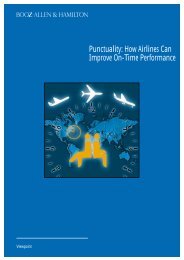The sentence
The sentence
The sentence
You also want an ePaper? Increase the reach of your titles
YUMPU automatically turns print PDFs into web optimized ePapers that Google loves.
Modal auxiliaries and related verbs<br />
A. <strong>The</strong> two uses of modal verbs<br />
<strong>The</strong> first use of modal verbs (1)<br />
1. Verbs like can and may are modal auxiliaries. We often refer to them as modal verbs or<br />
just modals. We use them with other verbs, for examples, to ask for permission:<br />
Can I use your phone, please? May I borrow your car, please?<br />
<strong>The</strong>re are ten modals: can, could, may, might, will, would, shall, should, must, ought to and<br />
three ‘semi-modals’: need, dare and used to.<br />
2. In their first use, modal verbs have basic meanings which are given in dictionaries:<br />
- can/could (= ability): I can lift 25 kg. / I can type.<br />
- may/might (= permission): You may leave early.<br />
- will/would (= prediction): It will rain soon.<br />
- shall after I/We (= prediction): Will we find our way? – I’m sure we shall.<br />
- should/ought to (= duty): You should do as you’re told.<br />
- must (= total obligation): You must be quiet.<br />
- needn’t (= no obligation): You needn’t wait.<br />
<strong>The</strong> first use of modal verbs (2)<br />
1. Modal verbs are not ‘complete verbs’. For example, we use verbs like must and can to<br />
refer only to the present or the future:<br />
I must go to the bank now. I must go to the bank tomorrow .<br />
This means we have to make up the ‘missing parts’ of must with have to.<br />
So if we want to express the past of must, we say: I had to go to the bank yesterday.<br />
In the same way, we use be able to to make up the ‘missing parts’ of can.<br />
2. Other important points about modal verbs:<br />
We can’t use them as to-infinitives: I want to be able to type very fast. (Not *to can*)<br />
We do not use the to-infinitive after modals: You must/mustn’t phone. (Not *to phone*)<br />
<strong>The</strong>re’s no –(e)s in the 3 rd person singular: <strong>The</strong> boss can see you now. (No –s on can)<br />
<strong>The</strong> second use of modal verbs<br />
1. <strong>The</strong> second way we use modals is to express degrees of certainly or uncertainly. We use<br />
nine of the modals for this purpose (not shall), but we don’t use them in a fixed order.<br />
We express the greatest uncertainty with might; the greatest certainty with must/can’t:<br />
He might be right. He might know the answer. (very uncertain)<br />
He could be right. He would know the answer. (fairly certain)<br />
He must be right. He must know the answer. (almost certain)<br />
He can’t be right. He can’t know the answer. (almost certain)<br />
We use be or an ordinary verb, not a modal, for ‘absolute certainly’:<br />
You are right. He can’t know the answer. (certain)<br />
2. In their second use, modals have only two forms:<br />
68




